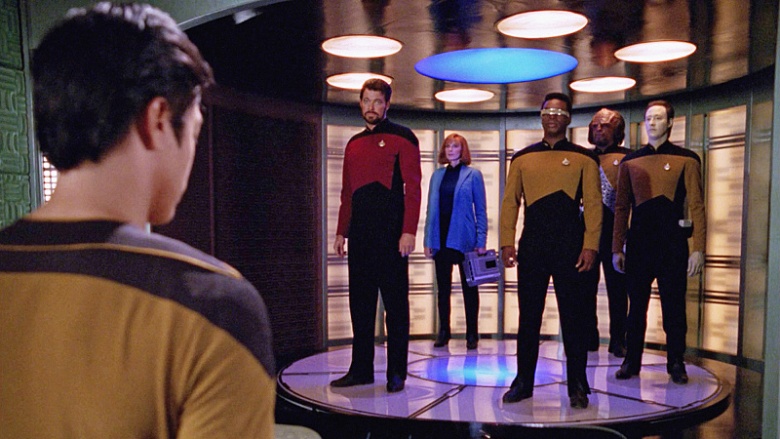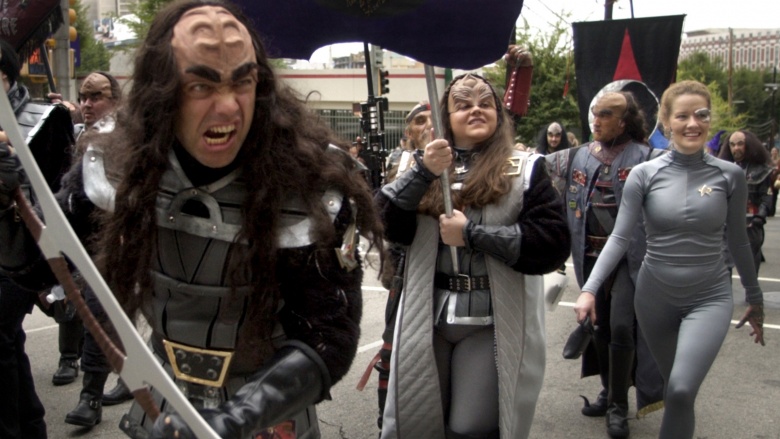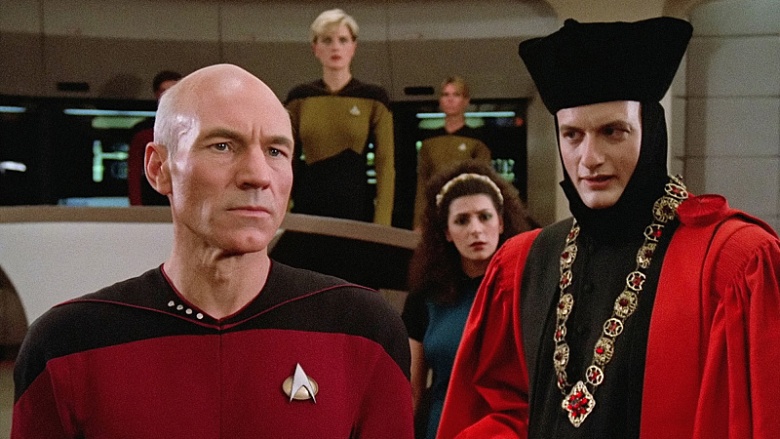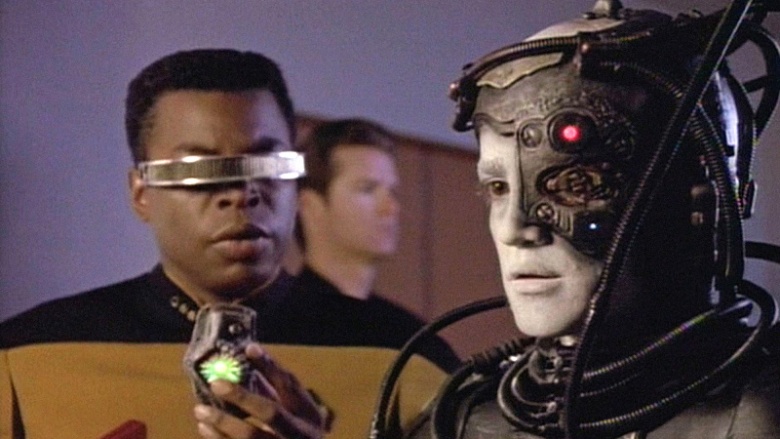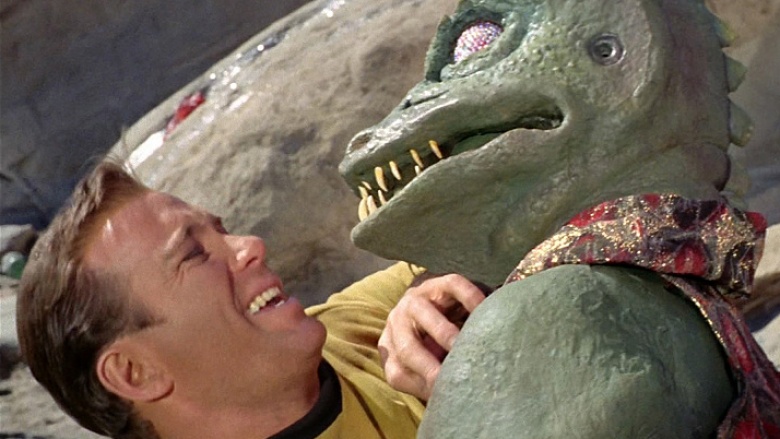Stupid Things In Star Trek That Make No Sense
Like the more serious, more studious older brother of fandom, Trekkers tend to see themselves as intelligent connoisseurs of science fiction rather than mindless fanboys of science fantasy. Think of it this way: how many books have been written on the science of Star Trek? By contrast, how many have been written on the science of Star Wars? Trek is for science geeks while Star Wars is for romantics. Trekkers pride themselves and their franchise on being steeped in some type of "actual science," while Star Wars fans daydream about telekinesis, laser swords and metal swimwear. However, if you look at Star Trek for a serious moment, you start to see that there are some Borg-cube sized problems that every fan must overlook.
Transporters
Simultaneously one of the coolest and least-reliable pieces of technology in the Star Trek universe is the transporter. Seriously, everything messes with a transporter's main function. Whether it's shields, atmospheric interference, or radiation, people are taking their lives into their hands whenever they step onto those transporter pads. The crew might end up with objects embedded in their bodies, split into good and evil versions of themselves, or transported to a mirror universe which sends their goateed evil counterparts to wreak havoc on the Enterprise. You want to know how to avoid all of those issues? Hop in a shuttlecraft.
All the aliens look alike
How is it that nearly every single alien encountered by the crews of the Enterprise, Voyager, or Deep Space Nine is somehow sporting the same physical structure? Two arms, two legs, one head, and standing upright is the way Star Trek has always liked its aliens. Throughout all of the series, something like over 50 alien species bear an exact or near exact resemblance to humans. It's not as if the human bipedal form is the greatest or most advantageous from an evolutionary perspective. Star Trek writers even attempted to acknowledge this in an episode of The Next Generation called "The Chase" that claimed that billions of years prior to the story, some race of ur-humanoids had seeded all the planets with their own DNA. This is a weak deus ex machina that is used to cover up for one thing: budget limits. Think about the rich variety of aliens in other science fiction properties like Dr. Who, or Star Wars. Star Trek should be more cognizant of this and take the time and money to get creative.
Humans are always right
It seems like nearly every episode of Star Trek features an alien race doing something based out of superstition, self-destructive impulses, bigotry, or misogyny. Every episode features a self-righteous scolding by the entirely unbiased and exceedingly decent crew of the Enterprise. In all the worlds that the crew encounters, can't they be taught something? They are, after all, supposed to be on a voyage of discovery "seeking out strange new worlds." Is that only so they can wag a finger at civilizations throughout the universe? The only person who ever seems to "learn" anything is Data, and he just continually discovers how being human is so awesome. That's a very flat learning curve. From the original 1960s series to its more contemporary peers, humans have seemed to have all the answers, even when they have come across omnipotent, omniscient antagonists like a Q.
The characters don't grow
Picture this: you're traveling through space (and occasionally through time) and seeing all sorts of amazing, once-in-a-lifetime events. Don't you think that would leave a lasting impression on you? And yet, the characters never seem to change to account for all of their extraordinary experiences. Kirk, McCoy, Picard, Riker, Laforge, Scott, etc. never change. It's like someone just hits the reset button after every adventure. That's not a story. It's a video game.
The stories are repeated again and again
You would think that traveling through the cosmos at faster-than-light speeds, seeking out strange new life forms would make for an interesting workday. And yet, the Star Trek writers' room must have a basket of character names, basic plots, and resolutions that they draw from in order to make all of the episodes. The repetitive nature of the plots with only minor permutations makes sitting down to watch an entire series a labor of love only for those obsessed with completing each series, not matter how hard the slog.

